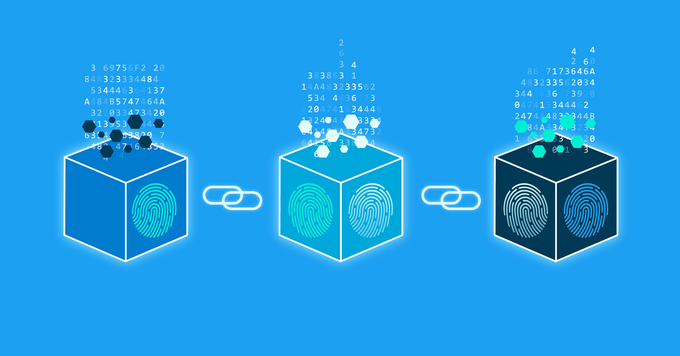Blockchain explained

Blockchain is a real buzz word these days, but what the hell is it?
In essence, a blockchain is a database or ledger. It logs info on stuff that happened in the past, but it’s got unique attributes that makes it far superior to ordinary databases.
A blockchain’s most important feature is decentralization. No one’s in charge – no single entity controls what data goes in. Copies of a blockchain ledger are stored and updated on computers all over the world. Also, you can only add info – you can’t edit or tamper with what’s already there.
Let’s say I send you a bitcoin. Everybody with a copy of the Bitcoin ledger can see I sent it to you and the ledger will be updated immediately.
Can I cheat the network? Could I change my copy of the ledger to say I have two bitcoins, send you one and keep the other?
The answer’s a resounding ‘NO’. It’s never happened, because a Blockchain network is an impregnable fortress, totally resistant to tampering and fraud.
But how does it work?
Blockchain data is stored in groups called blocks . Each block is time-stamped and linked to the one generated before it, creating a chain of blocks. That’s why it’s called a blockchain.
Each block contains 3 types of information:
• Data on transactions
• The block’s hash
• The hash of the previous block
Er… what’s a hash?
It’s a unique string of numbers that identifies each block. The numbers are automatically calculated based on the information stored in the block. If you try to change the block’s info you change the hash and therefore the block’s identity.
What’s important to grasp is that the hash of the previous block is also included in the new block. So, in fact, a block has two hashes: its own identifying number and the preceding block’s hash or number. This is what makes a cryptocurrency like Bitcoin so secure. If you try to change info in a block, its hash will change and so the block next to it will now have the wrong hash, and the chain will break.
You could try to change all the hashes, but this is super hard because a blockchain network deliberately makes it tricky to find them. On average, computers constantly guessing random numbers only find the hash for a block every 10 minutes and seeing if one’s a match. The process is called ‘proof-of-work’ (PoW), and is done by powerful computers called miners.
Let’s suppose you could manage all that intense calculation, you would still only be able to change your copy of the ledger. But the ledger exists on thousands of computers all over the world! So faking transactions is nigh on impossible. You’d need alien technology and an impossible amount of computing power to control those computers and pull the scam off.
So, a blockchain really is bullet-and-tamper-proof. And that’s why it’s set to revolutionize a wide range of industries, including banking, healthcare, insurance and many others.
In Musicoin’s case, blockchain technology allows for hosting free-to-listen-to music and transactions that are transparent and secure. It also means there are no third-parties and musicians get 100% of the revenue from their streams. INSTANTLY! No tedious reports that take months to compile and then pay out a derisory amount to musicians.
musicoin.org – free for fans, fair pay for musicians

Understanding the blockchain | STEVEE | musicoin musician
12.11.2018 @ 17:37
[…] Or if you prefer you can read the article here. […]
Rocking the Blockchain with Musicoin! | STEVEE | musicoin musician
13.11.2018 @ 13:26
[…] In just over a year, Musicoin.org has blazed a trail in the music streaming industry. The platform has revolutionised the way music is consumed and distributed: fans listen free and can engage with and support independent musicians, while the artists themselves earn the most competitive stream rate in the industry. What’s more, there are no annoying ads. The Musicoin miracle, or revolution if you prefer, is powered by blockchain technology. […]
Rocking the Blockchain with Musicoin! - AGW
13.11.2018 @ 16:21
[…] In just over a year, Musicoin.org has blazed a trail in the music streaming industry. The platform has revolutionised the way music is consumed and distributed: fans listen free and can engage with and support independent musicians, while the artists themselves earn the most competitive stream rate in the industry. What’s more, there are no annoying ads. The Musicoin miracle, or revolution if you prefer, is powered by blockchain technology. […]
Blockchain: What is it, How does it work...? - AGW
06.04.2019 @ 12:54
[…] Related link: Blockchain Explained […]
Blockchain: What is it, How does it work…? | STEVEE | indie musician
06.04.2019 @ 13:03
[…] Related link: Blockchain Explained […]